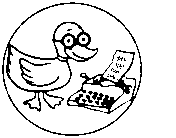Ham radio also known as amateur radio is communication on designated bands for non-commercial use. The ARRL is an organization that helps to organize ham radio. The American Radio Relay League (ARRL) is the largest membership association of amateur radio enthusiasts in the USA. ARRL is a non-profit organization, and was founded in 6th April 1914 by Hiram Percy Maxim.
According to the ARRL, ham Radio is, "a popular hobby and service that brings people, electronics and communication together. People use ham radio to talk across town, around the world, or even into space, all without the Internet or cell phones. It's fun, social, educational, and can be a lifeline during times of need."
Radio Amateurs (hams) provide, on a volunteer basis, public service, emergency, and disaster relief communications using radio stations located in their residences. Their services cost taxpayers nothing. They are provided at no cost to any served agency or to any government entity. FEMA has stated that when Amateur Radio operators are needed in an emergency or disaster, they are really needed.
At the center of ham radio is the practical experimentation to further the science and our understanding of radio communication. Individuals may pursue an interest in ham radio to communicate with others around the word while others may find experimenting with radio technology, both emerging and existing, to be the driving force for their interest. Although called "Amateur Radio," there are many ham operators that are experts in radio communication. It was the original members of ham radio that discovered and developed much of what is involved in radio communication today, including your "smart" phone and computer wireless technology.
Ham operators are allowed limited slices of many frequency bands across the radio spectrum which are allocated by the FCC. Some ham radio operators use the very reliable Morse code, while others use voice, digital, and other modes. At one time it was required to study and learn Morse code to get a ham radio license. This is no longer the case, although Morse code is very useful for emergency communication and still where most contacts are made during the annual Field Day exercise.
Part 97 is the section of Federal Communications Commission (FCC) rules and regulations that pertains to amateur radio and the conduct of amateur radio operators. It is a part of the FCC Title 47 of the CFR (Code of Federal Regulations). All Amateur Radio operations are subject to the Part 97 rules.
Call Signs
Each station is assigned a call sign which is used to identify the station during transmissions.
Amateur station call signs in the US take the format of one or two letters (the prefix), then a numeral (the call district), and finally between one and three letters (the suffix). The number of letters used in the call sign is determined by the operator's license class and the availability of letter combinations.
An amateur operator with an Amateur Extra Class license can hold a call from any of the four call sign groups, either by keeping an existing call sign (indefinitely, since there is no requirement to change call sign upon license renewal), or by choosing a Group B, C or D call sign under the Vanity Licensing Program.
- A - Amateur Extra Class
- B - Advanced Class
- C - Technician or General
- D - Club, and Military Recreations Stations; and sequentially to Technician or General
During the processing of a new license application, a call sign is selected from the available list sequentially using the sequential call sign system. This system is based on the alphabetized regional-group list for the licensee's operator class and mailing address.
As of March 2010, the sequential system for Technician or General is assigning 2-by-3 formats beginning with the letter K.
Getting Your ham License
To obtain an amateur radio license from the FCC you must attend a VE testing session and successfully pass an examination. Furthermore...
|
Note: This page is notably incomplete. You can help. Please contribute by registering your email address and adding your knowledge to this page. The D.U.C.K. wiki was created to be a free informative place that allows an open exchange of accurate information. Learn more... |
sample test questions
What's Happening in Ham Radio
Field Day
Field Day is an annual amateur radio exercise where ham operators attempt to work as many stations as possible on any and all amateur bands (excluding the 60, 30, 17, and 12-meter bands) and to learn to operate in abnormal situations in less than optimal conditions. Field Day helps to build emergency communications preparedness among amateur radio operators. Field Day is always the fourth full weekend of June, beginning at 1800 UTC Saturday and running through 2059 UTC Sunday.
Field Day stresses emergency preparedness. Frequently, entire radio clubs get involved and assemble a portable radio station in a field or park. Some might use quickly deployable portable antennas while other might erect more elaborate radio masts and towers supporting several antennas. Generators or solar power provide electricity to amateur radio transceivers, which may be located in tents, cars, recreational vehicles, or other portable shelters.
Field Day is open to all amateurs in the areas covered by the ARRL/RAC Field Organizations and countries within IARU Region 2.
VHF/UHF FM Simplex Calling Frequencies
- 146.52x Mhz - 2-meter national simplex frequency for calling
- 223.50x Mhz - 1.25-meter national simplex frequency for calling
- 446.0xx Mhz - 70-cm national simplex frequency for calling
- 906.5xx Mhz - 33-cm national simplex frequency for calling
- 1294.500x Mhz - 23-cm national simplex frequency for calling
